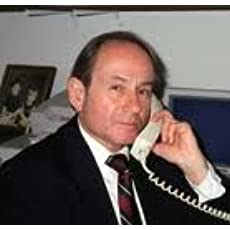Generally, clothing costs aren’t allowable as “ordinary and necessary” business expenses. They’re nondeductible personal expenses.
The IRS prohibits write-offs for clothing that’s adaptable to general wear off the job. It makes no difference that your work requires you to be fashionably or expensively dressed. What the IRS does permit are deductions for the cost and upkeep of special work clothes or equipment. To qualify for deductions, you must pass both parts of a two-step test.
· The clothing and equipment must be required by your employer.
· The clothes aren’t suitable for wear off the job.
Note that it isn’t enough that wearing special clothing is a condition of employment.
Some examples of distinctive work clothing that easily qualify: uniforms worn by fire fighters, police officers, letter carriers, health-care workers, professional athletes and delivery workers. Also passing muster are the kinds of clothing that protect workers from injuries. This category includes safety shoes and glasses, hardhats and work gloves.
Usually, the IRS prevails in disputes over deductions for business suits and dresses, because they are obviously appropriate away from work.
In a 1986 case, nationally ranked Chicago tennis pro Cecil Mella lost a match with the IRS over business write-offs for tennis clothes. Cecil worked for two private tennis clubs, both of whom barred players, including instructors, from playing on the courts unless they wore proper attire. He deducted such items as warm-up jackets and pants; shirts with a collar; shorts that were brief to give maximum freedom of movement and had pockets for tennis balls; and shoes, each pair of which lasted only two or three weeks and were designed, according to Cecil, to decrease the chances of injuries.
Cecil said he wore the items only when playing or teaching. But the Tax Court, in its unsought role as official interpreter of fashion correctness, noted: “It is relatively commonplace for Americans in all walks of life to wear warm-up clothes, shirts and shoes of the type purchased by while engaged in a wide variety of casual or athletic activities.” As for the shoes’ safety functions, the court characterized his statements as “uncorroborated and vague.” Decision: No deductions for expenses that weren’t ordinary and necessary.
In a 1979 decision, the court also threw out deductions for suits bought by Edward J. Kosmal, a Los Angeles deputy district attorney who planned to leave government service. Ed decided that the right way to impress his future employers and colleagues was to upgrade his wardrobe to the sartorial standards of a “big-time Beverly Hills P.I. attorney.” The court denied the deductions because, unquestionably, the clothes were fitting for ordinary wear.
Hairstyling And Makeup
The IRS and the courts sometimes differ on deducting hairdressing costs. The IRS classifies such payments as nondeductible personal expenses, even for a big-name, New York fashion designer like Mary McFadden, who’s in the public eye and “noted professionally for her distinctive hair style.”
However, an IRS defeat occurred in 1978, when the Tax Court sided with Margot Sider. Margot wrote off the cost of 45 extra beauty-parlor visits that were made, she argued, only because her hairstyle was an integral part of her job demonstrating and selling “a high-priced line” of cosmetics in a department store to a “sophisticated clientele.” As soon as she stopped selling, she went back to a simpler style.
At her trial, Margot cited a 1963 Supreme Court decision written by Justice John Marshall Harlan: “For income-tax purposes Congress has seen fit to regard an individual as having two personalities: One is a seeker after profit who can deduct the expenses incurred in that search; the other is a creature satisfying his needs as a human and those of his family but who cannot deduct such consumption and related expenditures.”
Margot maintained she’d spent the amount in issue as a “seeker after profit,” not as “a creature satisfying her own needs.” That satisfied the judge, who ruled she was entitled to fully deduct expenditures beyond “the ordinary expenses of general personal grooming.”
However, the IRS had no trouble convincing the Tax Court that Vivian Thomas shouldn’t be allowed to deduct grooming expenses. Vivian worked as a private secretary for an attorney who required her to be perfectly coiffed at all times while in the office. So she deducted the cost of twice-weekly trips to the beauty parlor. Sorry, said the court, but a secretary’s coiffure maintenance costs are not allowable— even in her case.
Back in 1979, actress September Thorp offered an unassailable not-adaptable-for-general-wear defense—and won—when the IRS challenged her deduction for makeup: “I’m in Oh! Calcutta! and I have to appear nude onstage every night,” argued September, “so I cover myself with body makeup. I go through a tube every two weeks, and it’s very expensive.”
___________________________________________________________________________
Julian left out one of the funniest clothing cases ever, that of Anietra Hamper
Julian Block writes and practices law in Larchmont, N.Y. and was formerly with the IRS as a special agent (criminal investigator) and an attorney. He is frequently quoted in the New York Times, the Wall Street Journal, and the Washington Post, and has been cited as: “a leading tax professional” (New York Times); “an accomplished writer on taxes” (Wall Street Journal); and “an authority on tax planning” (Financial Planning Magazine). This article is excerpted from “Julian Block’s Easy Tax Guide for Writers, Photographers, and Other Freelancers,” available as a Kindle at Amazon.com and as a print copy at julianblocktaxexpert.com. The National Association of Personal Financial Advisers says the book is “Easy to read and well-organized and can be helpful to planners in advising clients.” http://julianblocktaxexpert.com./
































































































Trackbacks/Pingbacks